Salesforce Change Intelligence Software
Salesforce Change Intelligence to Reduce Risk.
Sonar offers a suite of change intelligence and Salesforce security software – built to help Ops, Systems and IT Security leaders mitigate risk, prevent data loss and protect their most critical business system.

Avoid Salesforce Breaks and Protect Your CRM Data
Imagine how much easier managing change would be with a clear view of your tech stack and how it works.You could redesign processes that drive operational efficiency without the threat of breakages. Make Salesforce changes without risking lost revenue. And even release new SFDC automations faster than ever before!
Achieve all that—and so much more—with Sonar’s revenue operations software for Salesforce!
Where Revenue Operations & Information Security Meet.
Ops, IT and InfoSec teams rely on Sonar’s suite of Salesforce management solutions for more secure operations. Explore our features and see for yourself why security-focused teams choose Sonar.
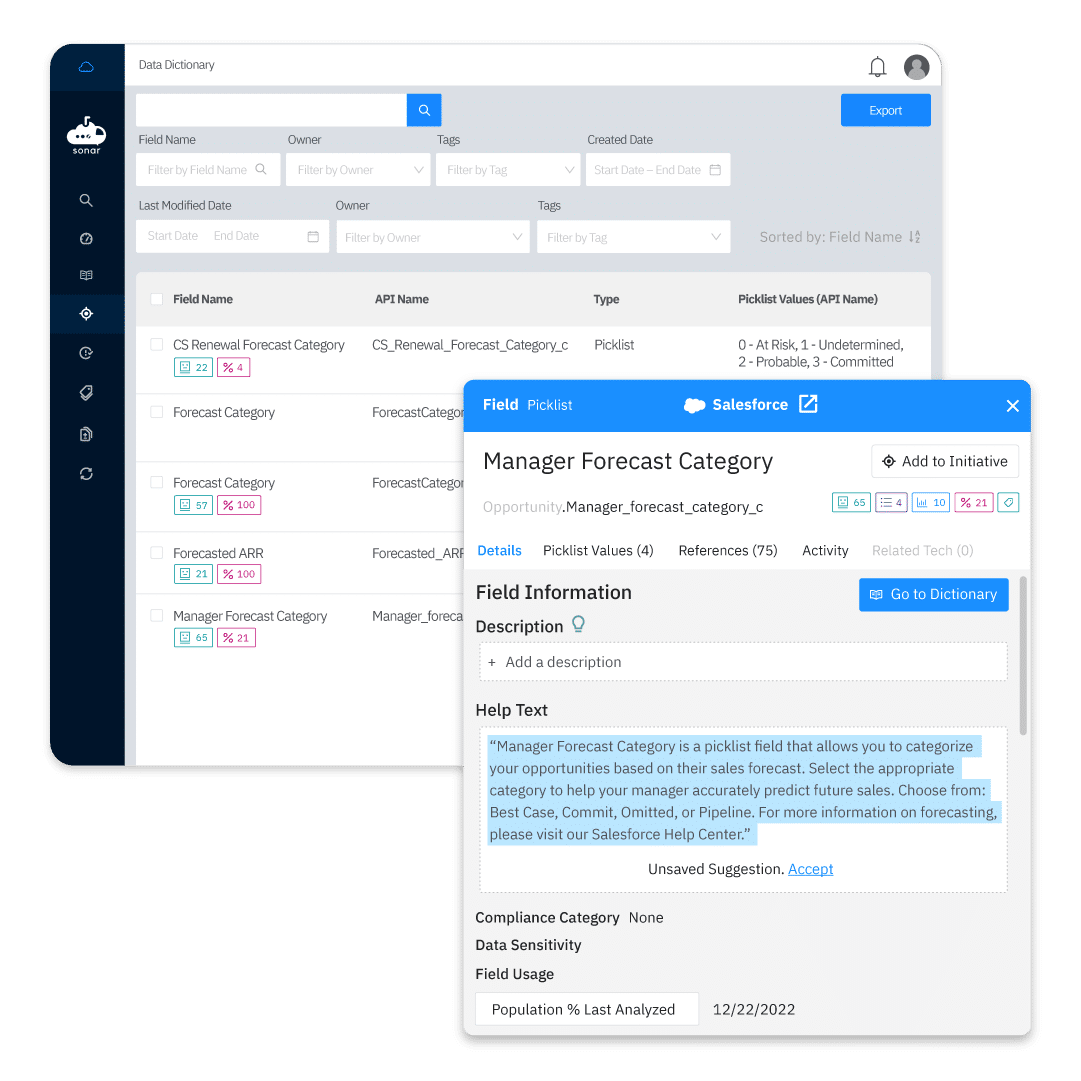
Salesforce Impact Analysis
Sonar dependency mapping software provides enhanced capabilities for conducting intelligent impact analysis and delivers seamless visibility into all references across a Salesforce organization. Providing transparency into the interconnectivity and automations that keep your CRM running, Sonar enables Sales Operation (SalesOps) and Revenue Operations (RevOps) a map to assess the scope of impact and spot potential breaks before they occur.
Track Salesforce Changes
It’s crucial to have full visibility into changes that are made across different teams within your organization, regardless of when they occurred. Change Timelines offers a timeline view (including the before-state) of changes being made across teams. And with daily email alerts and slack notifications, you’re never in the dark when it comes to change management.
LEARN MORE
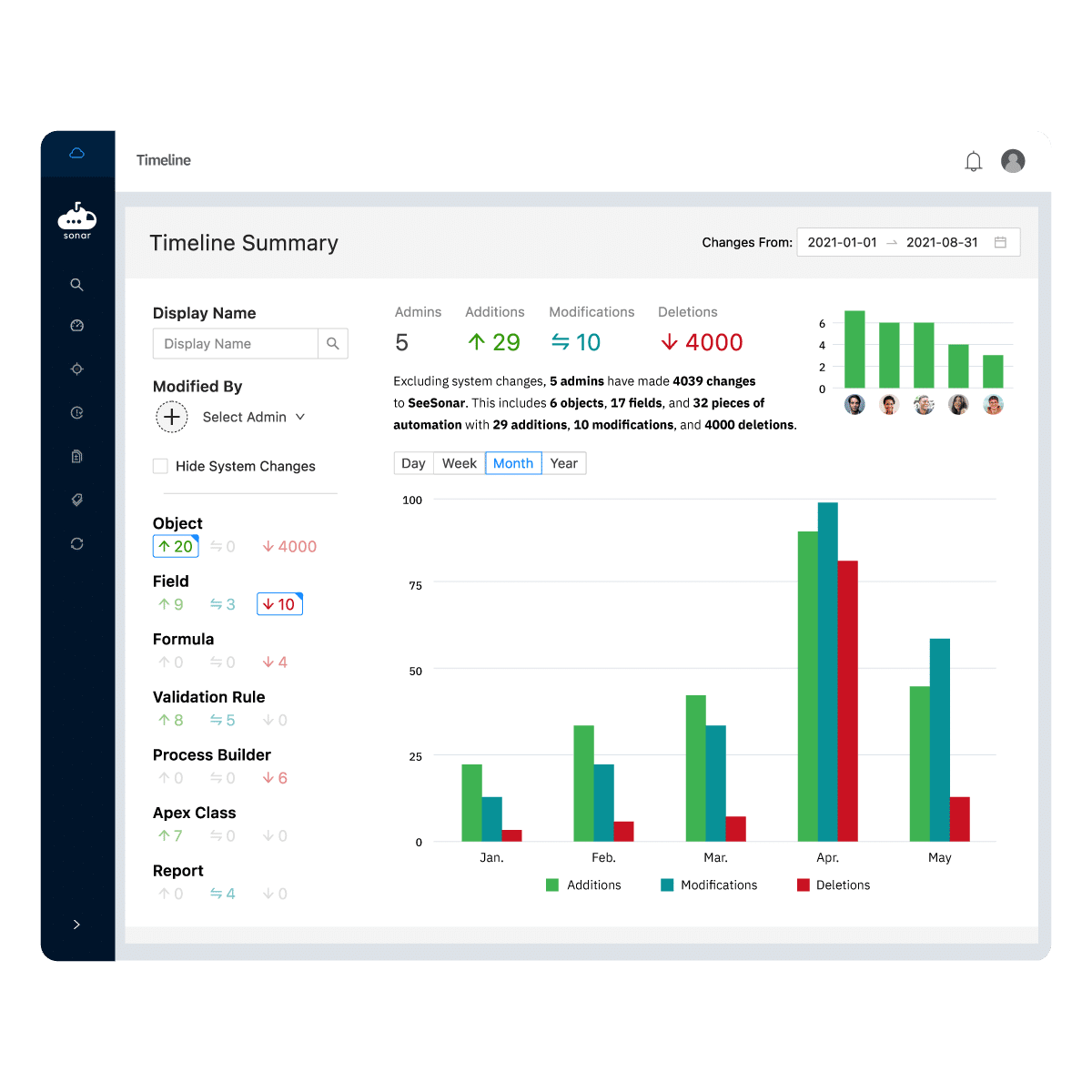
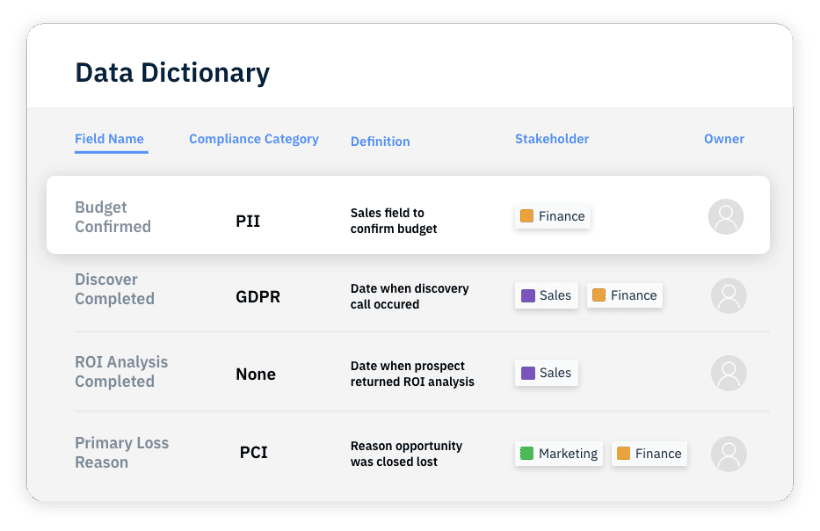
Salesforce Data Dictionary
Sonar offers a dynamic data dictionary for Salesforce instantly capturing changes to your Salesforce metadata, self-populating critical fields like business description and providing a framework to classify PII. Reduce costs and improves the agility of the Salesforce management team with Sonar’s automated data catalog software. Without relying on manual data capture and documentation, Sonar’s data dictionary supports data governance, breaking down data silos and helping Information Security leaders feel confident that data security policies are in compliance.
LEARN MORE
Connected Application Monitoring & Detection
Sonar’s data loss prevention software monitors Salesforce integrations and detects changes to connected application access, alerting Ops, IT and Security leaders when business sensitive Salesforce data may be at risk. By activating Salesforce’s Event Monitoring API, Sonar acts as your front line defense against misconfigurations & data leakage. And with API monitoring & anomaly detection, we surface leading indicators of service degradations, potentially fraudulent behavior and the possibility of unexpected data loss.
LEARN MORE
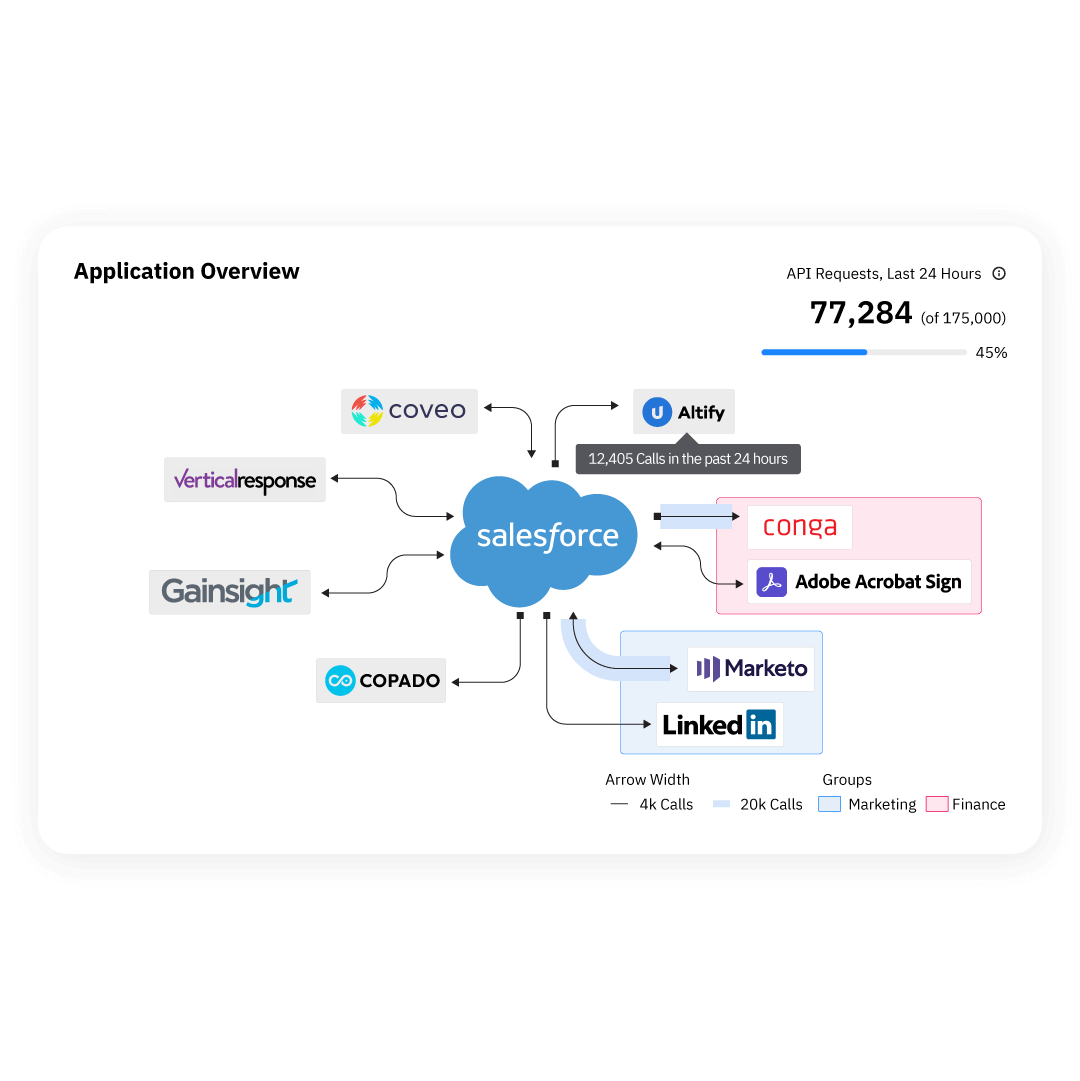
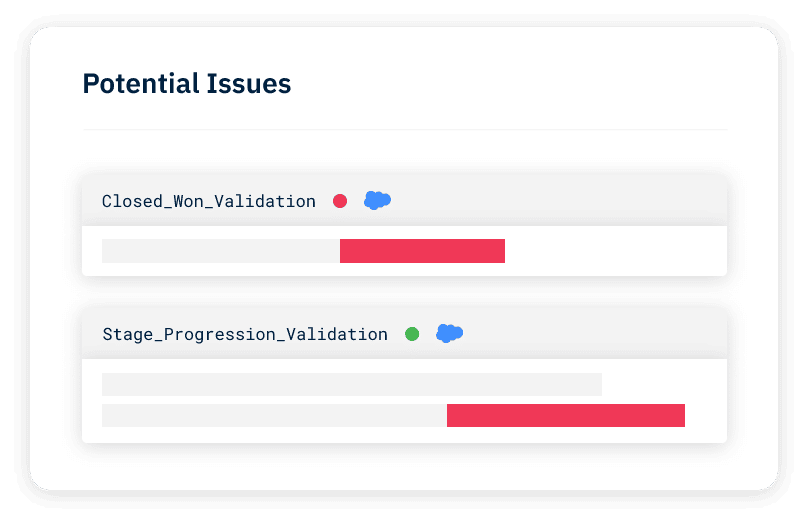
Validation Rule Monitor
It’s important to take a proactive approach to ensure the integrity of your data and prevent issues from impacting your business operations. This is where Sonar Software’s Potential Issues feature comes in handy. With this tool, you can identify possible errors in your Salesforce validation rules and fix them before they cause any silent breakages that can jeopardize your data quality.
LEARN MORE
Salesforce Project Management
Sonar’s Initiatives is a powerful tool that can help your Salesforce administration teams document and manage projects effectively. This lightweight project management tool offers various features that can help you organize your tasks, visualize your scope, and record changes made to your Salesforce system and other related technologies. With Sonar’s Initiatives, your team can get more work done and achieve better results.
LEARN MORE
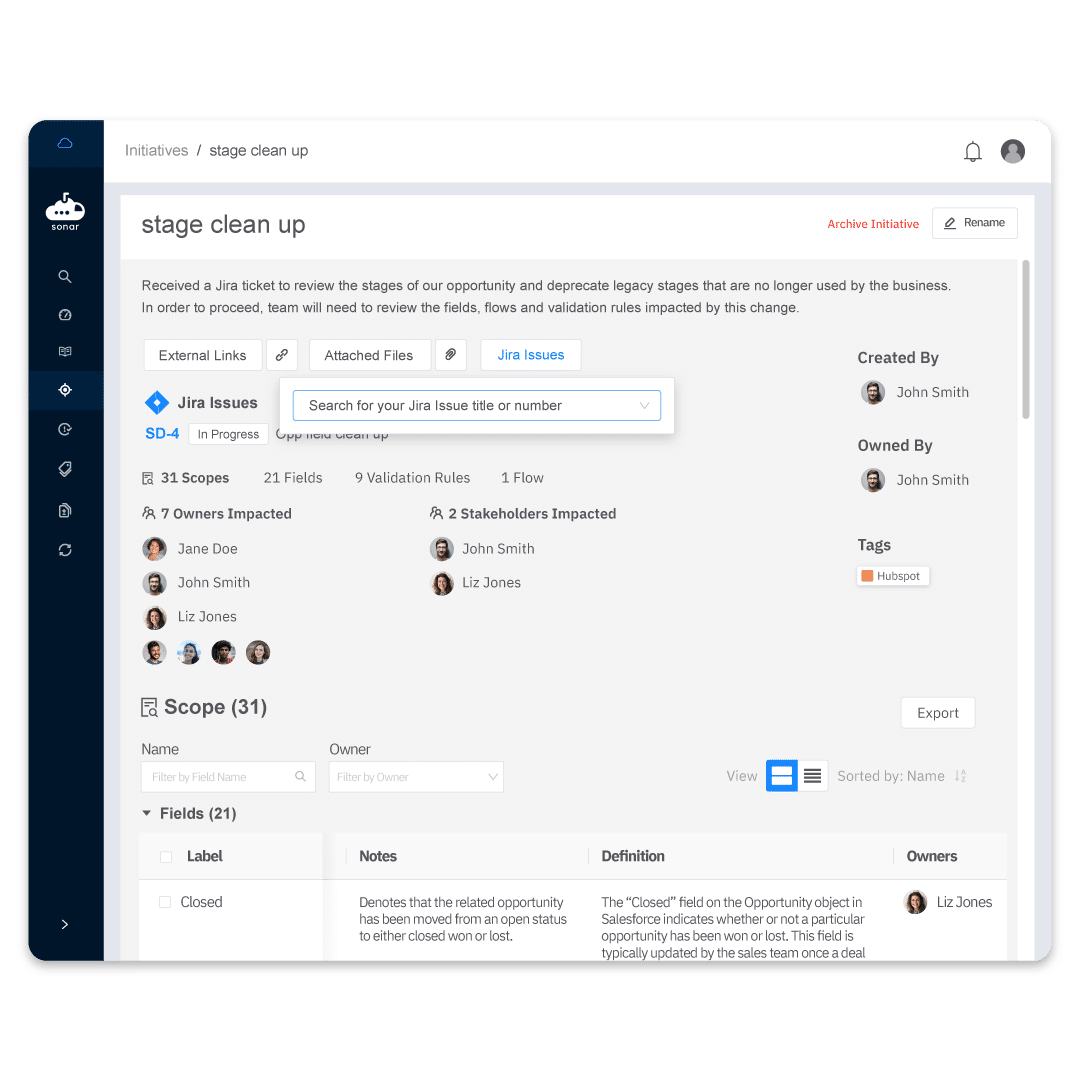
When to use Sonar Software
During a Salesforce implementation
Cleaning up technical debt
Expanding your revenue operations teams
Merging multiple Salesforce orgs together
Classifying data or building a data dictionary
Elevating your Salesforce data security posture
Sonar has saved my team and me countless hours when problem-solving errors in our Salesforce environments. Historically, we only had the ‘where is this used’ button but being able to see all field references across the entire org is a lifesaver.
PETER D., G2 REVIEWER
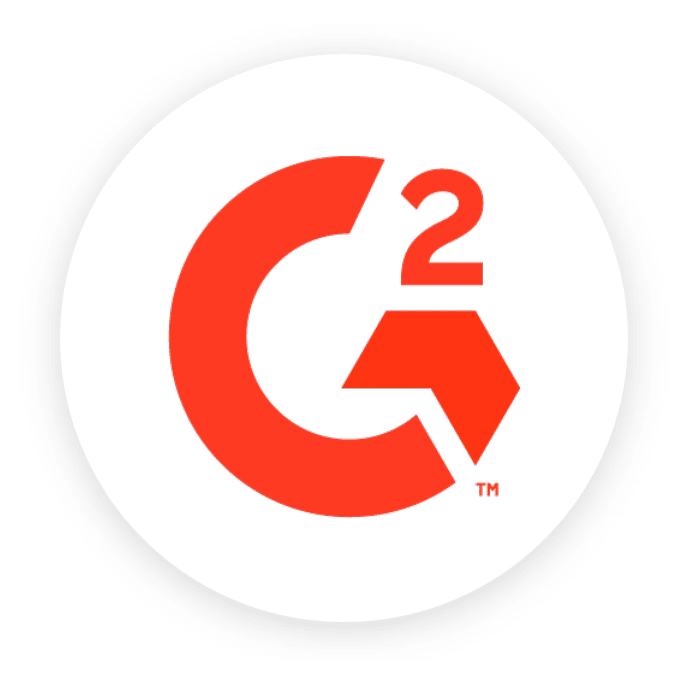
Built for anyone who relies
on Salesforce tech stacks.
Sonar Software has fundamentally changed how companies run operations. It eliminates the “software scaries” feeling, allowing you to build and deploy changes without stress.
Sales & Revenue Operations
Providing impact analysis, enhanced audit trail and change management tools to avoid breaks and increase efficiency.
InfoSec & Data Governance
Proactively manage Salesforce data security and receive real-time alerts when data security may be at risk.
IT & Business Systems
Mitigate risk and ensure system uptime across your integrated Salesforce tech stack with Sonar.
Learn more about how Sonar supports
IT & Business Systems Teams →
Salesforce Ops teams choose Sonar to drive change.
Smarter Revenue Operations with Sonar.
Experience why the most sophisticated Revenue Operations teams choose Sonar. Try our revenue operations software and see how it can help your team avoid breaks, build better documentation and increase Salesforce data security.
SEE SONAR IN ACTION
Salesforce Change Management FAQs
What is Salesforce Change Management?
Why is Change Management important in Salesforce?
What are some best practices for Salesforce Change Management?
What tools does Salesforce provide for Change Management?
What tools does Salesforce provide for Change Management?
How can Salesforce Change Management help in improving user adoption?
Salesforce Change Management includes processes like user training and communication about changes. This helps users understand the reason behind changes, how to use new features, and the benefits they will gain, thus improving user adoption. Moreover, by involving users in the change process (for instance, gathering their input during the planning stage), change management can ensure that changes are well-received and meet the actual needs of users.

